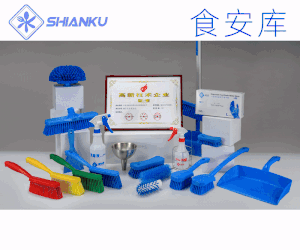食品伙伴網(wǎng)訊 2023年11月17日,歐盟食品安全局就一種食品酶α-L-鼠李糖苷酶(α-l-rhamnosidase)的安全性評(píng)價(jià)發(fā)布意見。
據(jù)了解,這種食品酶是由非轉(zhuǎn)基因阿達(dá)青霉菌株AE-HP生產(chǎn)的,旨在用于水果和蔬菜的加工,以生產(chǎn)果汁和其他水果產(chǎn)品。
經(jīng)過(guò)評(píng)估,專家小組認(rèn)為,在預(yù)期的使用條件下,不能排除通過(guò)飲食接觸引起過(guò)敏反應(yīng)的風(fēng)險(xiǎn),但這種情況發(fā)生的可能性很低。根據(jù)所提供的數(shù)據(jù),小組得出結(jié)論,該食品酶在預(yù)期的使用條件下不會(huì)引起安全問(wèn)題。部分原文報(bào)道如下:
The food enzyme α-l-rhamnosidase (α-l-rhamnoside rhamnohydrolase; EC 3.2.1.40) is produced with the non-genetically modified Penicillium adametzii strain AE-HP by Amano Enzymes Inc. The food enzyme is considered free from viable cells of the production organism. It is intended to be used in the processing of fruits and vegetables for the production of juices and other fruit products. The dietary exposure to the food enzyme-TOS was estimated to be up to 0.022 mg TOS/kg body weight (bw) per day in European populations. Genotoxicity tests did not indicate a safety concern. The systemic toxicity was assessed by means of a 90-day oral toxicity study in rats. The Panel identified a no observed adverse effect level of 300 mg TOS/kg bw per day, the highest dose tested, which, when compared with the estimated dietary exposure, results in a margin of exposure of at least 13,636. A search for the similarity of the amino acid sequence of the food enzyme to known allergens was made and no match was found. The Panel considered that a risk of allergic reactions upon dietary exposure to this food enzyme cannot be excluded, but the likelihood is low. based on the data provided, the Panel concluded that this food enzyme does not give rise to safety concerns under the intended conditions of use.
本文由食品伙伴網(wǎng)食品資訊中心編輯,供網(wǎng)友參考,有任何疑問(wèn),請(qǐng)聯(lián)系news@foodmate.net。
相關(guān)政策解讀











 地區(qū):
地區(qū):






 魯公網(wǎng)安備 37060202000128號(hào)
魯公網(wǎng)安備 37060202000128號(hào)



